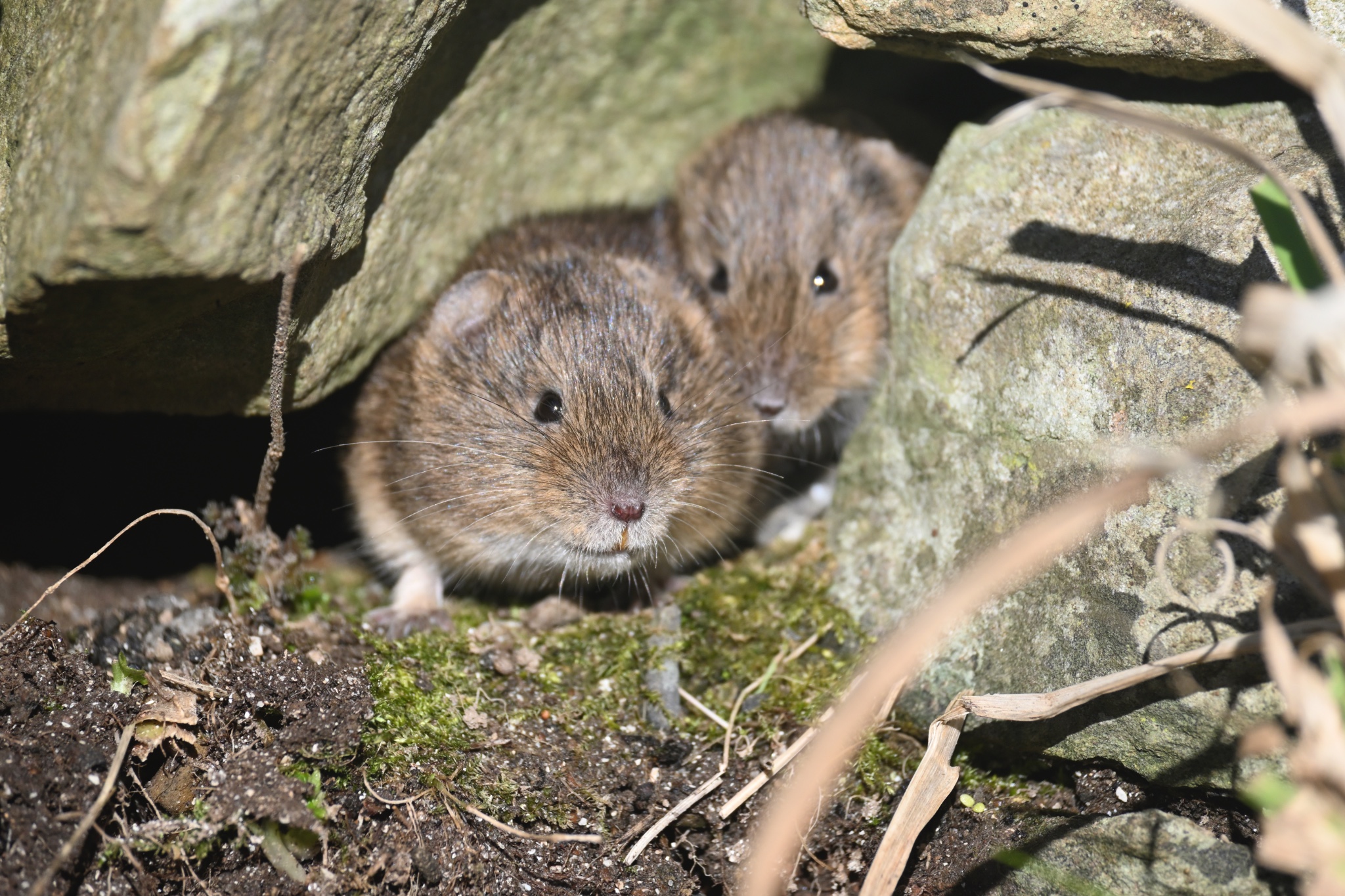These loveable creatures have been living with us on the islands for thousands of years. The oldest known radiocarbon-dated fossil of the species is 4,600 years old. But they’re elusive! You may have been visited by an Orkney vole without even knowing it.

They’re bigger than a mouse, smaller than your hand, and not found anywhere else in the world - they’re your friendly neighborhood Orkney Vole!
Our volunteers have spent this month looking for signs of Orkney vole life across the islands. They're an important food source for hen harriers and short-eared owls. However, the arrival of non-native invasive stoats has put the population at serious risk and threatens the natural food chain. In 2021, hundreds of dead Orkney voles were found stored inside a stoat den. By monitoring signs of Orkney vole life, we can track changes in their population and figure out our success.
We conduct these Orkney vole searches twice a year, once in April and once in September. We usually find more signs of voles in September as they’ve had a chance to breed over the summer.
If you want to know if an Orkney Vole has been visiting your garden, you’ll want to get close to the ground to peek inside a grass tunnel. Here’s what you should look for:

Droppings! If an Orkney Vole has been visiting your land, it may have left a little present behind - poo! Their droppings are small, a glossy dark green colour, and hard to spot.

Grass clippings! Although the Orkney vole loves to eat grass, they sometimes don’t always finish their greens. Another calling card they leave behind is small grass clippings. If you find these completely green with no evidence of yellow edges caused by oxidation, you can safely assume the Orkney vole’s visit was recent.
Have a go looking for an Orkney vole! It’s a great weekend outdoor activity with the kids.
If you've seen a stoat, report it to orkenynativewildlife.org.uk/report.

